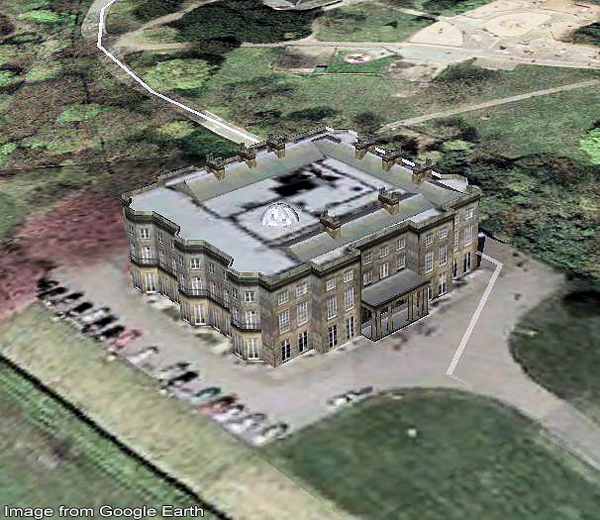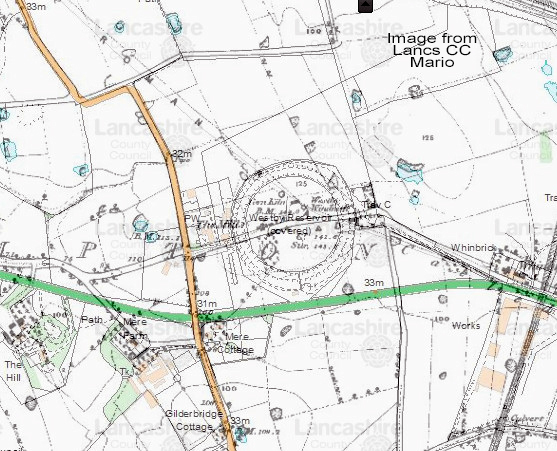
Last month I met with David Round, chief planning officer for the Wigan Council, with regard to potential work for us at Haigh Hall. In 2010 the hall was included as one of the possible sites for the 'Dig Greater Manchester' project. A desk top survey was carried out and areas were identified for potential archaeological investigation. For various reasons it was decided that Etherston Hall would be selected for the Dig instead and excavations were carried on that site in 2012 (see Newsletter 153). However Norman Redhead, from the GMAAS, has always maintained that Haigh Hall would be an ideal site for us to investigate.
Last year Wigan Council, with escalating bills for its repair and maintenance, decided to offer the hall up to private enterprise for possible conversion into a hotel. Approval has been sought from English Heritage as any modifications to this Grade II* list building would need to be agreed before a lease deal could be drawn up. To make the site viable as a hotel it would also mean the addition of an annex at the back of the hall to increase bedroom capacity. A lease agreement is still a long way off but David Round has assured me that full investigations by the professional archaeologist (paid for by the developers) would take place before the start of any development. However, in the meantime, he has said that he would be quite happy for us to carry out our own investigations in areas around the hall (even excavations, if we detected anything of interest).

Wyre Archaeology Group
This group from the Fylde have asked if we could help them with their investigations into the Roman roads around the Kirkham. Specifically a section called Danes' Pad. This route was identified by 19th century antiquarians leading west from the Roman fort at Kirkham. The 1849 OS map shows it curving north towards Poulton but its destination has always been a mystery. Indeed its very existence is cast into doubt as, over the years, very little evidence for it has ever emerged. However the Wyre Group have spotted an area where they think it may still be identified. David Hampson, their secretary, has asked if we would carry out a resistivity survey there.
The section in question is at Westby, where there seems to be a change in direction. A reservoir now covers the exact point but the Group have permission to investigate the fields on either side. We have had contacts with the Wyre Group before. In 2007 members of our Society were given a splendid guided tour around various archaeological features on the Fylde (see Newsletter 106). Later that year, their chairman, the late Neil Thompson, gave us a fascinating talk on the work of the Wyre Group. It would be great to re-establish our links with this group and hopefully help them discover the truth about this enigmatic route. You can find out more about the Group here: http://www.wyrearchaeology.org.uk.
Next Meeting
Wednesday 5th March - in the Standish Suite at the Brocket Arms (7.30pm as usual). At short notice, Boyd Harris from Chorley Archaeological Society has kindly offered to give a presentation entitled the History of Withnell Fold, a Lancashire Village and Paper Mill. The village and mill were built on a green-field site in 1843 and the owner and builder, Thomas Blinkhorn Parke, kept detailed diaries about the whole process. They give a first hand account of rural and industrial life from the mid 1840s. Boyd's photographic skills are well known and I'm sure his talk will also be well received. Hope to see you there, BA
|



